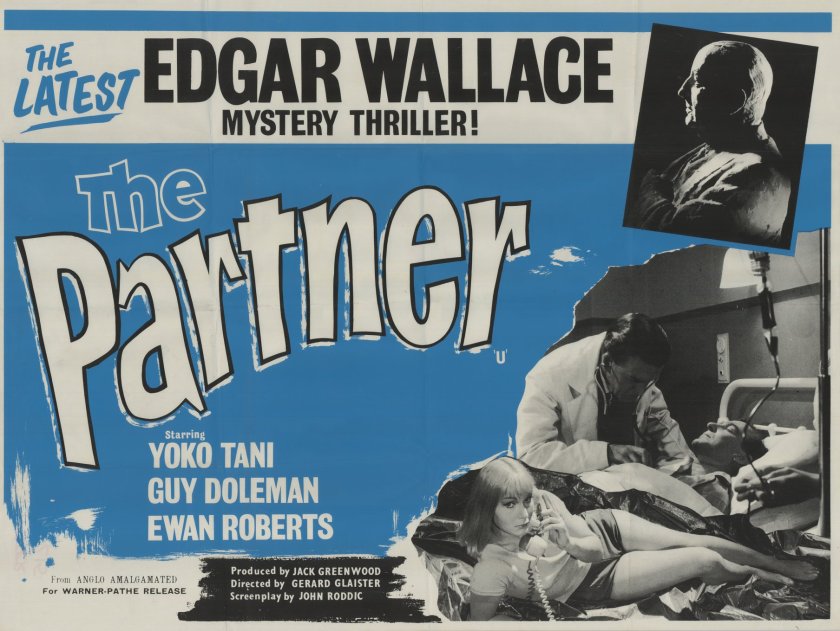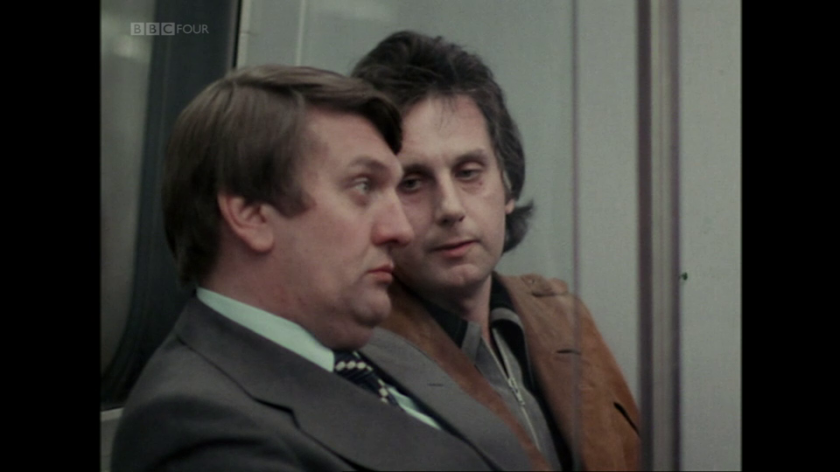
Speak to Germans of a certain age and the chances are that they will remember a series of films opening with a voiceover proclaiming ‘hier spricht Edgar Wallace’ (‘this is Edgar Wallace speaking’). A total of 32 films were made as part of a series that has become known as “Krimis” films. Still shown on television and available on DVD and Blu-ray the films have preserved Wallace’s reputation in Germany while he is largely forgotten in his homeland.
Not the first German adaptations of Wallace’s novels. Five German-language adaptations are known to have been produced between 1927 – 34 (there may have been others). Why did a Danish-German production company decide to embark on a fresh series of screen adaptations? For a country seeking to banish its past and create a new inclusive sense of nationhood what appeal was there in seeing recreations of 1920s England culled from the work of an imperialist?
During his lifetime Germany was a strong market for Wallace. German publishers were late in discovering Wallace’s commercial potential. The first translated novel was issued in 1925. Discovering the existence of a massive back catalogue of titles publisher Wilhelm Goldmann traveled to London and met with Wallace to secure the rights to issue translated editions of all title that had been published in the UK.
Prior to 1925, Wallace expressed amusement upon receipt of translated editions of his novels. Success in Germany made him more conscious of the dividends earned from overseas sales. For a man whose profligacy had brought him close to ruin the steady injection of revenue from a new market was most welcome.
In common with most authors of his generation, Wallace had written scathing commentary about Germans during World War I. In peacetime he became more amenable and is reported to have had a deep affection for Berlin. In this new market, he was soon to become a major celebrity. Reports of visits to Germany suggest that hundreds of people would turn up to catch a glimpse of him at train stations.
In the post-war era, sales of Wallace’s books in the UK declined while Germany remained a steady market. With sales in freefall, at least in the UK, the estate sold rights to adapt Wallace’s novels for film and the stage to Anglo-Amalgamated for the UK and Commonwealth and Danish film producer Preben Phillipsen for German-speaking territories.

Wallace’s novels had been a publishing sensation when first published in Germany. Would German audiences who had grown accustomed to American crime thrillers be willing to view domestically filmed adaptations of English thriller novels?
Produced, at least initially, in tandem with the UK’s Anglo-Amalgamated series, the German adaptations retained the novels period settings. Running until 1972, early films in the series were relatively faithful adaptations of the source material. Later films would be more liberal in what elements would be retained and/or discarded.

Production commenced with the adaptation Der Frosch mit der Maske (The Frog with the Mask). Early entries in the series were filmed in Danish studios. Later films were shot in facilities based in Hamburg and Berlin.
With box office returns healthier than expected it was clear to the producers and distributors that German audiences would be willing to see further installments. Production was ramped up for further entries in a domestically produced franchised that would ultimately comprise of 32 films.
Dismissed by critics, today the films have a cult following. Posts by fans in forums and Facebook groups discuss production details and celebrate deficiencies. In 2004 nearly two million German people saw a parody film, Der WIxxer, during its theatrical run.
For modern viewers, the presence of unconvincing sets and repeated stock footage may enhance the sense of guilty pleasure when watching a ‘Krimi’ film. What appeal did the films have for the first wave of ticket buying cinemagoers? The films blending of genres and increased self-reflexivity in later productions makes it difficult to classify the series. Incorporating themes and elements from film noir, horror, Golden Age detective fiction, comedy, German Expressionism, and the musical the majority of Krimi films forms conform to a narrative template. Critics and academics have noted repeated elements present in most Krimi films; masked killers, an investigator, comic sidekick, castles and/or mansions, and excessive use of fog.

The imagined version of 1920s England seen throughout the series has puzzled critics attempting to identify why the films were initially popular. Aside from stock footage, location scenes were filmed in redressed German streets. The England represented in the films never existed.
Commentators have suggested various reasons for the films’ appeal including socially conservative ideology, audience enjoying the appeal of identifying the villain before the investigator and seeing foreign generic forms absorbed into a distinctly German cultural product.





























